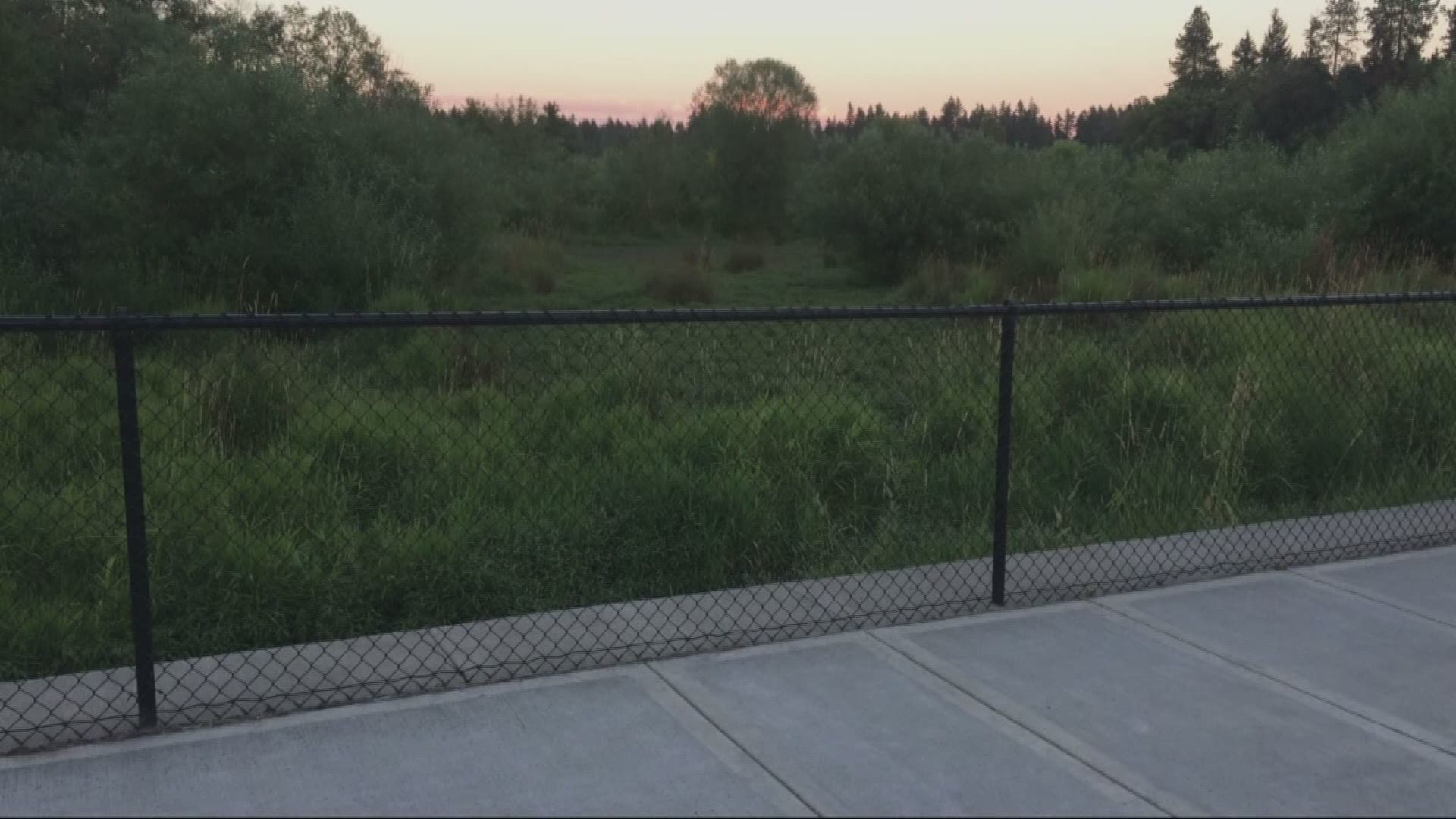ASTORIA, Ore. (AP) — Yellow signs at trailheads in Ecola and Fort Stevens state parks feature a drawing of a cougar and a blank space to write the date whenever the animal is spotted.
Most years these spaces remain empty, but state wildlife managers say cougar populations appear to be increasing elsewhere along the Oregon Coast, raising questions about what is and what could become cougar country.
An updated cougar management plan, approved by the Fish and Wildlife Commission in mid-October, found that the coast management zone has reported a rise in cougar sightings, as well as an increase in conflicts with the big cats.
Now, state biologists based in Newport are beginning the first-ever coastal effort to attach GPS collars to adult cougars and track their movements to see just how far these predators wander, what they eat and where they might be going next.
The coast management zone is a large area that includes the northern section of the Cascade Mountain Range, the Portland, Salem and Eugene metroplexes and the rural North Coast. For years these areas were written off, not considered good cougar habitat, said Derek Broman, carnivore-furbearer coordinator for the Oregon Fish and Wildlife Department.
Sure, the animals were present, but they existed in a fragmented region, a mix of urban and rural where the lush, rough terrain and relatively limited prey made for poor habitat. It was the last place to expect a population boom.
"Those might have been some premature assumptions," Broman said. "They're not holding true."
Wildlife managers believe cougars could be reaching a saturation point elsewhere in the state, forcing young animals to seek new territory. However, on the coast and in the Willamette Valley, human populations have increased along with cougar populations, opening the door for potential clashes and an uptick in sightings.
In the updated cougar management plan, there are maps of the coastal zone sprinkled with dots that represent the location of dead cougars — cats killed by hunters, struck by cars, shot by wildlife managers after they threatened human or animal safety. The mortality numbers, along with the ages of the dead cougars, are one way wildlife managers estimate the total population.
On one map, showing cougar mortality from 1987 to 1994, there is a smattering of dead animals. Each dot is distinct. In the map for 2006 to 2016, the dots form thick black clusters in the south, especially around the Alsea management area near Newport where biologists plan to begin to collar and tag cougars this fall.
Broman calls the Alsea area the "front range of cougar expansion."
Jason Kirchner, a state wildlife biologist who is leading the collaring efforts, is replicating a study from northeastern Oregon, an area known for having a robust cougar population. The Alsea team hopes to collar 10 adult cougars, preferably five males and five females. They are curious what they will discover.
In northeastern Oregon, male cougars can have a home range of 78 miles. But there, the big cats roam a landscape of open grassland and ridges, a different type of forest. They hunt Rocky Mountain elk and mule deer. Cougars on the coast must navigate a very different terrain — dense forests where Roosevelt elk and black-tailed deer don't cover as much ground, where the undergrowth tangles and ensnares, where towns cluster near the ocean and cities sprawl in the valleys.
Ten or 20 years ago, Kirchner says the Alsea area didn't see the number of cougar sightings and cougar-related damage complaints he is receiving now. The blood and scat samples, the GPS coordinates, all the information he and his team will collect this year and next year could provide a baseline for future management decisions on the coast.
"Something's going on and we just don't quite know what," he said.
An estimated 6,493 cougars lived in Oregon in 2015, a healthy population, according to the state.
"Cougars have proven to be highly adaptable to human disturbance," the updated state management plan notes. ". Assuming adequate cover for movement and dispersal, there is no reason to doubt that cougars are capable of utilizing urban habitats in Oregon."
This summer, people reported multiple cougar sightings near downtown Tigard, a city of more than 48,000 outside of Portland. In the Redland area, a Clackamas County sheriff's deputy's dash camera caught a cougar on video as it bounded out in front of the car, its legs kicked back in a long, exaggerated stretch before it cleared the road and disappeared into the trees.
It's rare to see a cougar in Astoria. Still, sightings do occur every few years — usually on the wood-hemmed roads high above downtown, on Pipeline Road near the dump, for instance. People will report a cougar dashing across the road in front of them.
Ken Nelson, the city's public works superintendent and a lifelong hunter, can count on a hand and a half the number of times he's seen a cougar, even as he's roamed the woods around Tillamook or in eastern Washington and the Cascades. It's been several years since he had to put up a "cougar sighted" sign anywhere in Astoria.
Hunters in the wider coastal management zone, even when they have cougar tags just in case, are more likely to report taking a cougar while hunting for a different animal entirely.
But, as Broman said, "The chances are plenty of cougars have seen you and you have not seen them."

